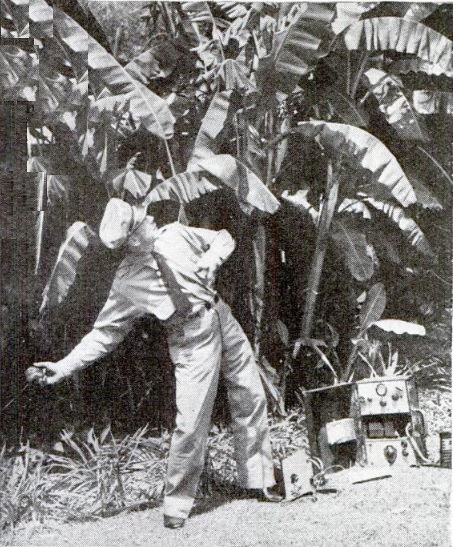
In 1941, the ham radio operator shown here was asked how long he would need to get his portable station into operation in the field. “Six minutes is the average time,” he replied. The officers asking the question were skeptical, but they watched as he opened his suitcase, hooked up a car battery, hammered in a ground stake and slung the antenna into a tree. He then tapped out a message to the control station fifteen miles away.
This was but one of the tales recounted eighty years ago this month, in the March 1941 issue of Popular Mechanics, in an article entitled “Radio Hams Practice for War.” It detailed the work of the 1800 member Army Amateur Radio System and pointed out that in time of war, thousands of trained hams would go into the military for active duty, and others would take on civilian duties such as listening for clandestine stations.
In another exercise, hams were asked, “your radio transmitter is completely smashed by a falling chimney. How long will it take to borrow an old broadcast receiver from a neighbor and build a new transmitter from its parts?” Another ham was ordered, “simulate destruction of your main transmitter. Rig up your emergency equipment and report back on the air as soon as you can.”
The article detailed a number of ways in which hams were “preparing themselves against a possible ‘M’ day.”
